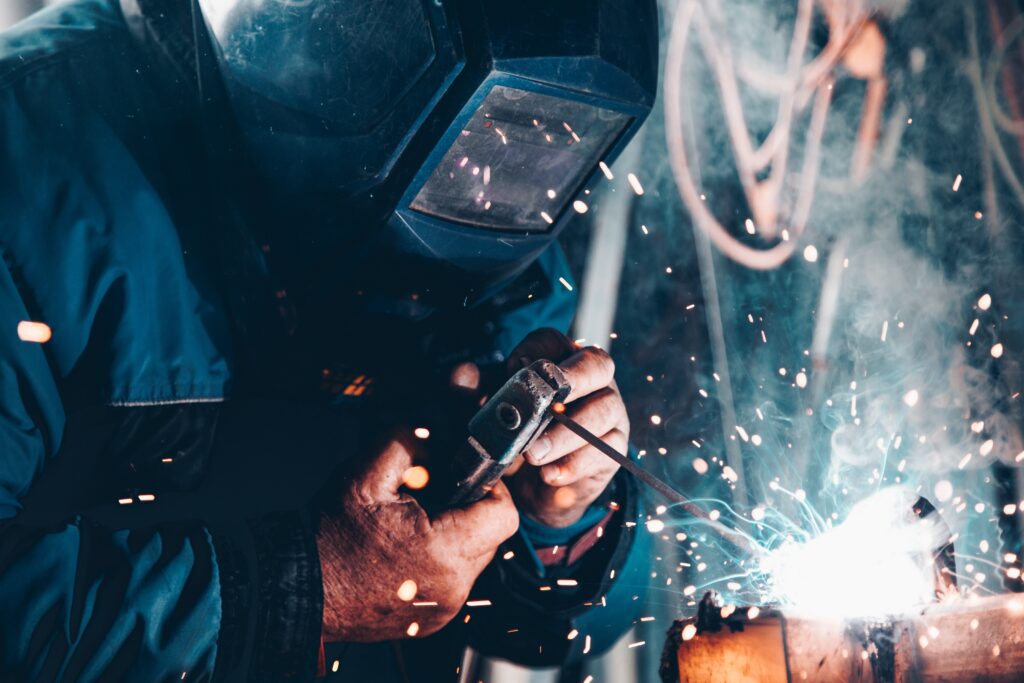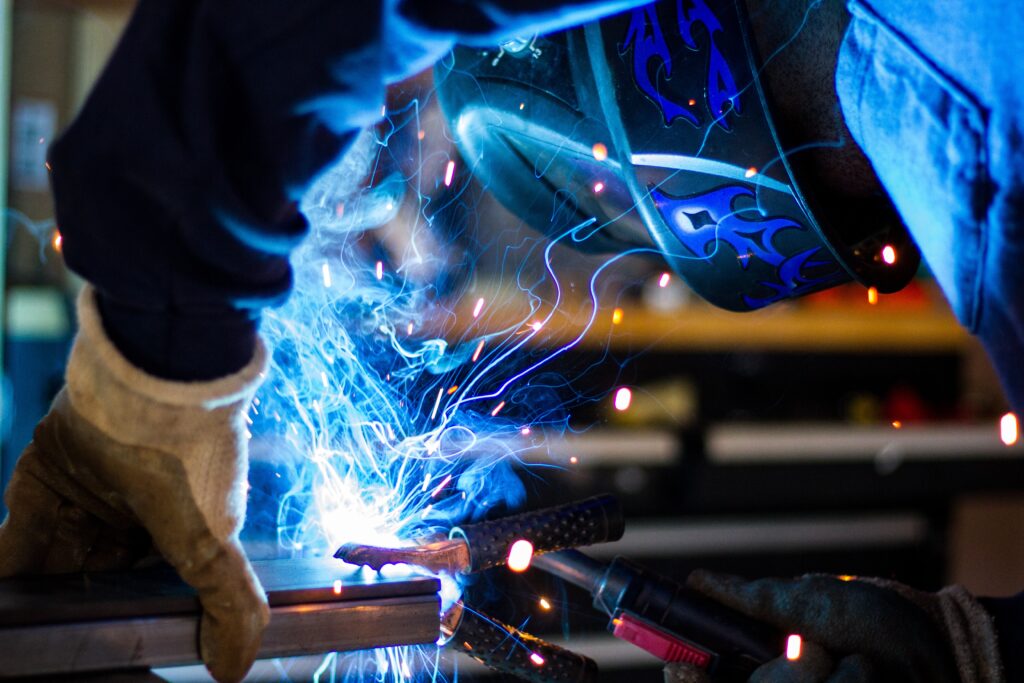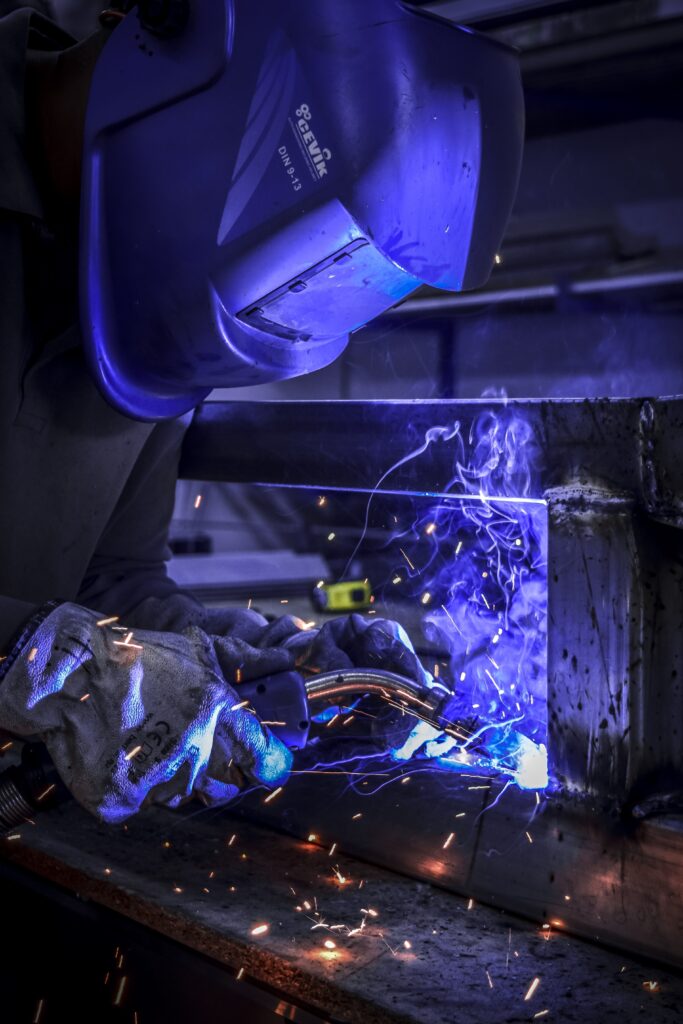You’re in for an enlightening read today about the workload involved in welding. The question on your mind, “Does Welding Require Heavy Lifting?” is indeed the crux of this piece. It’s a commonly asked query which we’ve taken upon ourselves to answer comprehensively, making your journey towards understanding the physical requirements of this valuable craft much easier. You’ll gain insights into the various types of welding tasks, the physical demands of each, and whether or not they all require the prowess of a weightlifter. Grab a seat and get ready to unmask the realities of the welding world. You might just be surprised at what you find.

Understanding the Nature of Welding Work
Welding is a critical profession that involves a combination of physical and mental resilience. It demands excellent strength, precision, and keen attention to detail, alongside an enduring commitment to safety. The essence of a welder’s work revolves around melting and fusing materials, typically metals, to form strong joints. In the following sections, we take an in-depth look at the nature of this challenging yet rewarding profession.
Physical Demands of Welding
Welding work can be physically demanding. Tasks like lifting heavy equipment, bending, and twisting your body to reach difficult welding areas, and standing or sitting in the same position for extended periods are part of a welder’s daily routine. Additionally, welders also have to bear the weight of the protective gear they must wear, which can also contribute to the overall physical strain they may experience.
Skills and Knowledge Needed in Welding
Being a successful welder requires a mix of technical, mental, and physical skills. Technically, a welder must understand various welding processes, material properties, and the ability to read and interpret blueprints. Mental resilience is necessary for problem-solving, focus, and patience during long welding runs. Physically, welders need strong hand-eye coordination, steady hands for precision work, and good physical health to cope with the physical demands.
Various Forms of Welding
Welding comes in many different forms, each with its specific applications, techniques, and challenges. Examples of these include Tungsten Inert Gas (TIG) welding, Metal Inert Gas (MIG) welding, Shielded Metal Arc Welding (SMAW), and others. Each of these types of welding has its unique requirements and uses, making the profession diverse and adaptable to various job situations.
Common Physical Demands in Welding
Welding is a profession that frequently involves lifting heavy objects. Welding equipment can be heavy and welding supplies often come in large quantities. Bending and twisting your body to reach specific welding areas or awkward positions is also not uncommon. Additionally, countless welders spend long hours in stationary positions, which can strain the body. Welders also adorn themselves with protective gear, such as helmets and gloves, that add additional weight and can become burdening over time.

Ergonomics in Welding
Importance of Ergonomics in Welding
Ergonomics is a crucial factor in the field of welding. Ensuring that your body and the surrounding environment are well-aligned can not only increase productivity but also help prevent occupational injuries. Optimal ergonomic conditions can mean the difference between a productive, injury-free career and chronic pain, fatigue, and potential disabling injuries.
Potential Risks from Poor Ergonomics
Poor ergonomics can result in injuries like back pain, neck strain, muscle sprains, eye strain, and fatigue. These injuries can severely impair a welder’s ability to carry out their work and may lead to long-term health issues if not addressed promptly.
Ergonomic Solutions for Welding
Improving ergonomics in welding could involve adjusting workstations to better fit the welder, using tools designed to reduce strain, and taking regular, brief breaks to relieve physical pressure. Regular physical fitness and stretches specifically designed for welders can greatly reduce the risk of ergonomic injuries.
Types of Welding Jobs and Their Physical Requirements
There exist many specializations within the welding industry, each with unique physical requirements.
Industrial Welding
Industrial welders typically work in factories or fixed locations, often doing repetitive welds on a specific product or component. This form of welding can require significant lifting and bending but typically provides regular breaks and consistent work environments.
Underwater Welding
Underwater welding necessitates extreme physical fitness. Welders in this field require SCUBA training, with jobs often involving working in challenging underwater environments for extended periods. The weight of the underwater gear and the physical strain of the work could be taxing.
Structural Welding
Welders working on large structures such as bridges or buildings typically face workdays filled with heavy lifting, long hours, and possibilities of working in uncomfortable positions. However, this comes with the satisfaction of contributing to sizable and impactful projects.
Automotive Repair Welding
Repair welders work in automotive industries, repairing vehicles’ bodies or components. The task often requires welders to bend or contort their bodies into awkward positions to reach certain parts.

The Role of Heavy Machinery in Welding
Utility of Heavy Machinery in Welding
In the world of welding, heavy machinery plays an essential role. This machinery can include large welding machines or robotic welding arms in automated welding processes. Such equipment can be used to complete bigger and more complex welding operations more efficiently and accurately.
Typical Heavy Machinery Involved in Welding
Some examples of heavy machinery in welding include welding robots, laser welding machines, and larger multi-process welding units. Other machinery may include conveyance systems, hoists, or cranes used for transporting materials around a shop or worksite.
Operational Skills Required for Welding Machinery
Operating heavy welding machinery requires extensive training and proper operational skills. Many machines have intricate interfaces with a plethora of settings to comprehend. Moreover, safety is paramount when dealing with heavy machinery, necessitating extensive knowledge about the proper operation techniques, machine maintenance, and safety protocols.
Understanding Welding Equipment
Components of Welding Equipment
A welding set up often consists of a power supply, electrode holder, ground clamp, protective gear, and sometimes, a welding gas supply. Various tools and accessories such as pliers, clamps, brushes, and hammers are also vital for effective welding operations.
Weight and Portability of Welding Tools and Machinery
Welding tools and machinery can range from light, portable units that handily move around a work area, to heavy, stationary machinery used for more substantial welding jobs. Handling these tools safely and effectively often requires strength and a solid understanding of the tool’s functionality.
Safe Handling of Welding Equipment
Safe handling of welding tools is paramount to prevent injuries. This involves lifting heavy items correctly, ensuring all surfaces are dry and free from potential slip hazards, and securing all equipment to prevent unexpected movement. Knowledge of safety protocols is crucial in preventing accidents.
Preventing Injuries in Welding
Common Injuries in Welding
Welding work can sometimes lead to injuries such as burns, eye damage from harmful rays, muscle strains, or even injuries from falling or flying objects.
Safety Protocols in Welding
Safety should always be the welder’s number one concern. Prioritizing proper safety techniques, such as wearing the correct protective gear, working in a clean, uncluttered workspace, and following all necessary safety procedures, can greatly help in preventing injuries.
Proper Lifting Techniques in Welding
Welders often need to lift heavy equipment and materials. Hence, mastering proper lifting techniques is crucial. Using the legs instead of the back, keeping the load close to the body, and not twisting when lifting can help prevent injury.
Importance of Physical Fitness in Welding
Physical fitness is critical to coping with the demands of a welding job. Good physical health can increase strength and stamina, reduce the risk of injury, and improve overall job performance.
Importance of Physical Fitness for Welders
Physical Abilities Needed in Welding
Physical fitness is important in wielding, not only for heavy lifting but also for fine motor control during precise welding tasks. Endurance, flexibility, and strength can drastically affect a welder’s ability to perform the job safely and efficiently.
Fitness Tips for Welders
Regular exercise focusing on flexibility and strength training can help build endurance and reduce the likelihood of injuries. Some ideal workouts for welders include core strengthening, upper and lower body strength exercises, and cardio for increased stamina. Remember, always consult with a professional before starting a new fitness regimen.
Effect of Physical Fitness on Productivity and Safety in Welding
Physical fitness can enhance a welder’s productivity by increasing strength, endurance, and focus. It can also reduce the risk of injuries by improving balance, coordination, and general physical resilience.
The Changing Landscape of Welding Work
Influence of Technology on Welding
Technology has greatly impacted the welding industry, bringing innovations like robotic welding, advanced welding machines, and other automated tools. This has not only improved efficiency and precision but also reduced the physical demand on welders.
Increasing Automation in Welding
Automation in welding is on the rise. Robotic welders and automated welding machines are increasingly common in large-scale manufacturing, providing consistent, high-speed welding results while allowing welders to assume supervisory roles.
How Technology is Reducing Physical Demands in Welding
Technological advancements have made welding less physically taxing. Robotic and automated processes take over the heavy lifting and repetitive actions, reducing the physical strain on human welders. This has resulted in improved working conditions, with welders monitoring and controlling processes rather than carrying out all the manual labor.
Learning Resources for Aspiring Welders
Welding Courses and Certifications
many technical and vocational schools offer welding courses that provide essential skills and certifications for aspiring welders. These courses typically cover everything from basic welding techniques to more advanced topics, providing the basis for a successful welding career.
Online Resources for Learning Welding
In the digital age, there are countless online resources available for those interested in welding. These range from online courses and video tutorials, to forums and blogs where experienced welders share tips and insights. However, be aware that nothing can replace the hands-on experience you get from practical training.
Practical Training Opportunities in Welding
For those serious about pursuing a career in welding, look for opportunities for practical training. Apprenticeships are fantastic ways to gain hands-on experience while learning from skilled welders. Practical training provides an invaluable opportunity to apply theoretical knowledge in real-life situations, ensuring you are job-ready.
